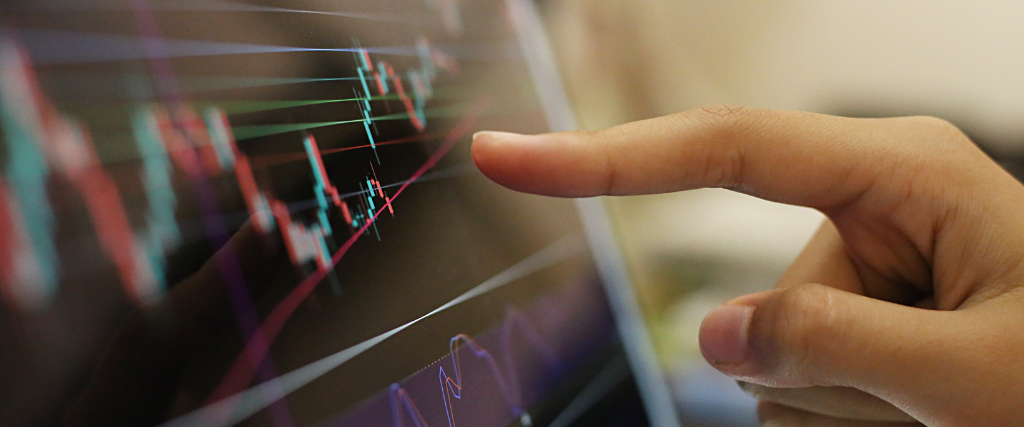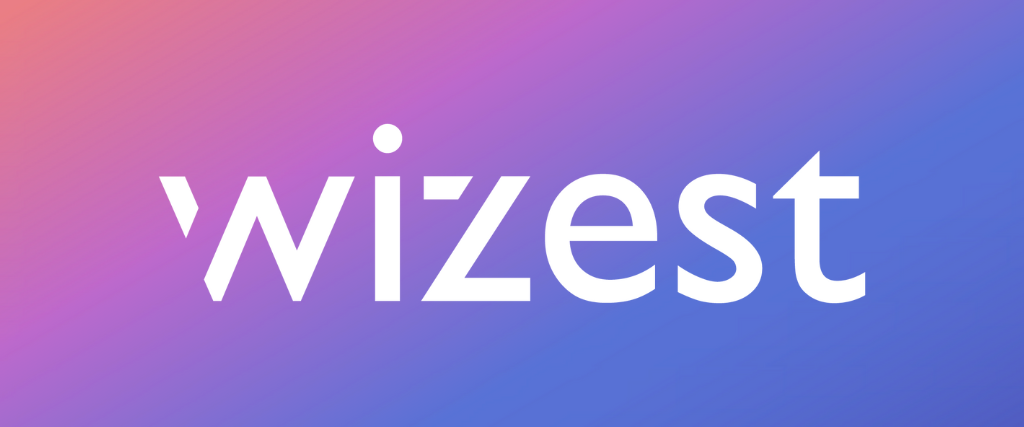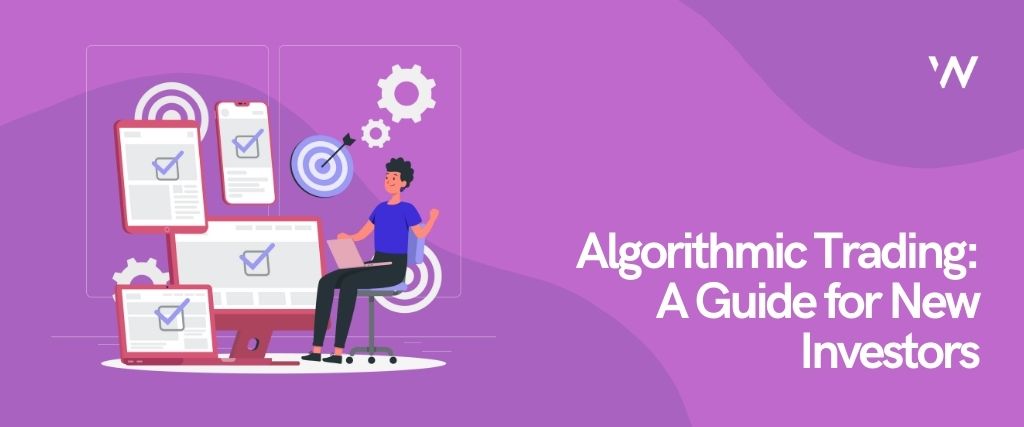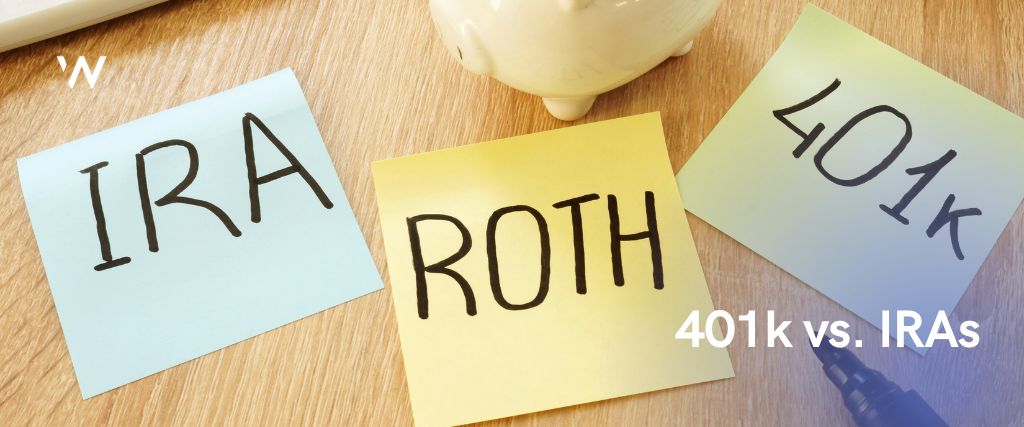Investing in Commodities: Their Role in a Beginner's Investment Portfolio
Investing in Commodities can be a great way to diversify your stock market portfolio and take advantage of the potential for higher returns. Commodities are raw materials or products that can be bought and sold in the market, such as gold, oil, corn, wheat, or coffee beans. One way to invest in these materials is, of course, to just buy them outright and wait for them to gain value. But the most common way to invest in commodities is through the futures market.
Futures contracts are financial instruments used to trade commodities on the futures markets. With an understanding of how these markets work and some sound strategies, solid returns can be achieved through trading in commodities markets. In this guide we will explain what commodities are, provide an overview of different types of commodity trading strategies, along with their associated risks and benefits, so you can decide if investing in commodities is right for you and your personal investing style.

What Does Investing in Commodities Mean?
Commodities are physical goods or raw materials that can be traded in the financial markets. They have a standardized quality, and commodity prices are determined by their supply and demand dynamics in the market. Commodities can include agricultural products such as grains, meats, and dairy products; livestock such as cattle and hogs; energy sources such as oil, natural gas, coal, and electricity; metals such as gold, silver, copper, aluminum, and iron ore; and other minerals like diamonds.
Unless you’re interested in buying some livestock, investing in commodities involves trading futures contracts,which provide investors with the right to buy or sell an asset at a predetermined price on a future date. These contracts give traders the ability to take advantage of price movements in commodities without having to take actual delivery of the goods. In exchange for this flexibility, traders must pay for margin accounts to cover potential losses due to market volatility. Futures contracts may also include options which allow investors to buy or sell at a specified strike price for a specific period of time.
The commodities market is affected by factors such as global economies, weather conditions, political events, and any other geopolitical issues that influence supply and demand dynamics. This makes investing in commodities highly speculative and carries substantial risk. It is important to understand how these factors affect commodity prices before entering into any trading activity so you can make sound decisions about your investments. Ideally, novice investors should have guidance if they’re interested in incorporating these investments in their portfolio.
Different Types of Commodities Trading
Now that we understand the basics of how commodities investing works, let’s discuss some of the methods used to execute these trades. There are several different types of trading strategies used in the commodities markets which can be categorized based on when the trader enters and exits a position.
Position Trading
Position trading involves taking a long-term view on the market and aiming to capture larger price movements over time by holding onto positions for days, weeks, or even months. This strategy requires more patience but is well-suited for investors with a long-term approach who are looking to make high profits with low levels of risk.
Day Trading
Day trading is an aggressive type of trading where positions are held for only a single day. Day traders look for short-term fluctuations in the commodity markets and attempt to take advantage of small price movements within that timeframe. Day traders need to have a thorough understanding of how the markets work and must carefully monitor their positions throughout the day in order to make profits.
Swing Trading
Swing trading involves taking advantage of larger price swings over multiple days or weeks by entering into long or short positions depending on current commodity market conditions. Swing traders need to have an understanding of technical analysis tools such as moving averages, stochastics, Bollinger Bands, etc., in order to identify entry points with good potential reward/risk ratios.
Arbitrage Trading
There is also arbitrage trading which involves exploiting discrepancies between prices across different markets in order to buy low and sell high simultaneously. The key here is being able to identify these discrepancies quickly before they disappear – this type of trading requires both speed and precision in order to recognize profitable opportunities as they arise.
Spot Trading
Spot trading is a type of commodities trading that involves taking advantage of short-term price movements in the market. Spot traders enter into contracts for immediate delivery and payment, meaning they must buy or sell a commodity within two business days. This type of trading requires quick reflexes and an eye for chart patterns as it targets smaller price movements over shorter timeframes. Spot traders need to have a thorough understanding of the markets and must carefully monitor their positions throughout the day in order to make profits.
No matter what type of strategy you choose when investing in commodities, it’s important to understand the inherent risks associated with each type and invest responsibly according to your own risk tolerance level.

Benefits of Commodities Trading
Commodities trading can provide investors with a number of unique benefits that make it an appealing option for those looking to diversify their portfolios. By investing in commodities, investors are able to access markets that may not typically be available to them, providing the potential for greater returns. Additionally, commodities provide added stability by hedging against inflation and market volatility.
Commodities trading also offers investors the opportunity to take advantage of leverage, allowing you to put down less capital while still reaping the rewards of potentially higher profits. This type of trading also provides greater liquidity than other types of investments, as positions can be easily opened and closed within days or even hours.
Furthermore, commodities trading provides diversification benefits due to its low correlation with other asset classes, like stocks or bonds. Commodity prices can often move differently from equity prices, helping investors balance out their portfolios and manage risk across multiple markets. Finally, commodities trading is an accessible form of investing that has lower barriers to entry compared to other asset classes and can be relatively easy to learn if done correctly.
Risks of Investing in Commodities
However, along with those unique benefits come some unique risks. Especially for novice investors, commodities trading can be a risky venture and should always be approached with caution. One of the main risks associated with commodities is the high level of volatility involved – prices can move swiftly and dramatically, leading to potentially large losses if trades are not carefully managed. Additionally, commodities markets are heavily reliant on external economic factors such as interest rates, inflation, geopolitical events, and other market conditions which means that price movements may occur suddenly and without warning.
Another risk to consider is the margin requirement for trading commodities. Commodities futures contracts typically require a relatively high initial margin in order to enter into a position because of their higher potential for loss. This means that investors need to have sufficient capital in order to make these trades – failure to do so could lead to premature liquidations of positions or other financial hardships.
Finally, there is also counterparty risk when trading commodities. As all contracts are settled with a third-party clearinghouse, there is always a possibility of default or counterparty failure which could lead to significant losses if not properly managed. Therefore, investors must always read and review any other agreements they enter into before making trades in order to minimize their exposure to this kind of risk.

Strategies for Getting Started with Commodities Investing
If you’re just getting started building your investment portfolio, you should probably work with a financial advisor before entering the commodities market. It is important for traders to employ the right strategies in order to ensure healthy returns in the commodities market, and to do so requires some tools and experience, as well as the time required to constantly monitor the markets.
One key strategy for commodities trading is the use of technical analysis. This type of analysis looks at past price trends in order to predict future movement in the market. By studying chart patterns, support and resistance levels, and other indicators, traders can gain insight into when they should enter and exit positions. Technical analysis also allows traders to identify opportunities in the market that may not be immediately obvious upon first glance.
Another important strategy is risk management. Since commodities markets are inherently volatile, it is essential for investors to manage their risk by setting stop losses or using other protective measures. This helps limit potential losses if prices move against them, allowing investors to stay in control of their investments even when the markets become unpredictable.
Fundamental Analysis
It is also critical for commodities traders to have an understanding of fundamental analysis, as well as technical analysis. Fundamental analysis looks at factors such as supply and demand dynamics, macroeconomic conditions, government policies, and global events that could impact prices. By analyzing both types of data and making informed decisions based on them, investors can gain a better understanding of how markets may move over time and take advantage of any opportunities that arise.
Finally, having patience is also a critical aspect of successful trading in commodities markets – although high-risk strategies may offer more reward potential there are still no guarantees that these will be successful every time. As such, investors must always maintain a long-term perspective when entering positions rather than expecting quick returns from short-term trades alone. By following these strategies and tips, investors have a much higher likelihood of succeeding with their commodities trading ventures over time.
Common Mistakes to Avoid When Investing in Commodities Market
One of the most common mistakes made when investing in commodities is trading without a plan. Before entering into any trades, it is essential to conduct research and develop a strategy that outlines the specific investments you wish to make and how long you plan on holding them. Without this kind of preparation, investors may find themselves making decisions based solely on emotion instead of logic which can lead to significant losses.
Another common mistake is overtrading. Oftentimes, novice traders may become too eager to enter the markets and end up taking on too many positions in a short period of time. This type of activity can be incredibly risky as it increases exposure to various kinds of market volatility while also decreasing liquidity which could lead to losses if prices move against them.
In addition, some investors may not be properly informed when it comes to understanding the markets they are trading in. It is essential for traders to understand the basics of commodities trading before engaging in any actual investments; this means researching different products, evaluating economic indicators, and monitoring news sources related to their chosen markets so they can make informed decisions.
Finally, another mistake that many investors make is not diversifying their portfolios properly. By putting all their eggs in one basket (i.e., concentrating entirely on one commodity or sector) they are putting themselves at risk should anything happen to adversely affect that particular asset class. Therefore, it is important for investors to diversify both across sectors and products within those sectors in order to protect against potential losses due to sudden market fluctuations or other unexpected events.
How to Get Started with Investing in Commodities
One of the most important tips for getting started with investing in futures markets is to understand the nuances of the market. It's essential for investors to do their research by reading industry publications, attending seminars, or seeking out professional advice so they can learn the fundamentals and start trading with confidence.
It is also important to have a clear risk management plan in place before making any trades. This should include setting stop losses and limiting leverage – both of which help ensure that losses are kept to a minimum if prices go against them. Additionally, investors should be aware of margin requirements as this may dictate how much capital they need to have in order to open certain positions.
In addition, it is important to consider diversification when investing in futures markets. Although some traders may focus on one specific asset class or sector, this strategy carries more risk than investing across multiple markets due to potential correlations between different assets. Therefore, it's best for investors to spread their capital across various markets in order to minimize overall risk exposure.
Finally, it is important for investors to stay up-to-date with news and events related to the markets they are trading in order to make informed decisions about when or when not to enter into positions. By remaining aware of current economic conditions and changes in global regulation or policy that could impact prices, traders can remain on top of their investments and make better-informed trades over time.

Our Solution to Investing in Commodities
So, you’ve decided to start making your money work for you. Great! But if you’re new to investing, you’ll probably need financial expertise to help you on your investing journey, especially if you want to get into commodities trading with a diverse and rewarding portfolio. If you go to your bank for advice, they will ask for an initial investment in the six figures. At the same time, most investing apps don’t offer any guidance.
That’s where Wizest comes in. We created an investing solution to democratize the stock market and remove some barriers to entry that discourage novice investors. We understand the stock market can be intimidating and overwhelming and that most people’s lives are too busy to spend hours analyzing the market and making thoughtful investments.
Wizest lets you pick people instead of stocks. You can build your team of financial experts by browsing their Expert Profiles and Portfolios like you would on a social media platform. Building your team takes just minutes, replicating the portfolios of Experts with one click after you check out their profiles. It’s like fantasy football for investing, and you can shuffle your team of Experts anytime!
Our platform was designed to make investing simple for new investors, diversification easier for veteran investors, and the financial journey engaging and fun for everyone, regardless of your experience level. Our simple subscription model makes it affordable for everyone (the cost of 1 coffee a week), no matter the size of your account, with no hidden fees.
Start investing today to take advantage of our special launch pricing!
Algorithmic Trading: A Guide for New Investors...
2023-05-31
Algorithmic trading is a way to automate some of your trading strategy. Utilizing algorithms and mat...
Read moreThe Debt Ceiling and How it Affects Individuals...
2023-06-07
A look at the function the debt ceiling serves in our economy, how it affects individuals, and how w...
Read more401k vs IRAs: Choosing the Right Savings Option...
2023-06-13
401k vs IRAs - Putting money in a savings account is great, but there are more efficient ways to rea...
Read more


